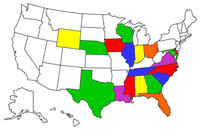
Originally Posted by
rleffler

This is probably the one area that keeps me up at night, since I'm about a month away from getting a pink slip for my RV-10. I think my approach is to invite a group of 3 or 4 builders (not at the same time) over to inspect the RV-10 before the final FSDO visit. To motivate them a little, I'm going to offer them their favorite adult beverage for each building defect or issue they find. In my opinion, there is no room for ego here. Worse case is that I may owe some friends a few drinks, but the positive is that I hope they find anything that I may have overlooked or missed.



 Reply With Quote
Reply With Quote



